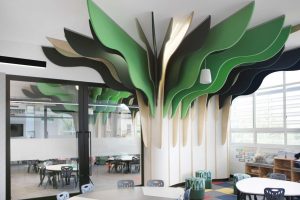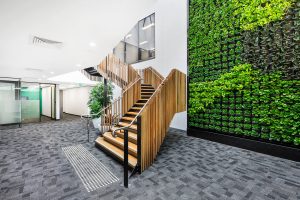Why it’s an important distinction to make
At the beginning of each year and then many times throughout that year, article after article and blog after blog list and wax lyrical over the hottest emerging trends in commercial interior design. But what’s important is that we don’t let trends dictate our decisions; that we can take a step back and examine that trend to determine why it is rising in popularity and whether that popularity is due to something meaningful and/or revelatory, or merely something superficial and/or buzzworthy.
So…how can we tell the difference?
Trends, as is their nature, come and go…their popularity rises and falls, their visibility waxes and wanes. Evolutions may start out as trends, but they eventually, naturally, integrate into the fabric of the industry as time goes on. A trend that stands the test of time and earns the label of an evolution is always tied to a sense of logic – whether to the design elements, human benefit, practicality or to best practice.
Let’s take a look at colour. Trending colours such as rose gold in 2018 or, 40 years earlier, burnt sienna in 1978, burst into the living rooms and reception areas of interior spaces, accompanied by impassioned claims that they were ‘here to stay’. When excavating that trend, there’s no particular reason behind their popularity other than an in-the-moment preference.
Neutral and natural colours, such as specific shades of grey or brown, became integrated into the evolution of interior design because they were tied to something foundational or meaningful – whether to the colour spectrum or to elements in nature. Yes, there may be years where they are less prevalent, but they can never go out of style because of the inherent weight and internal logic. Certain greys will always offer a strong basis on which you can build contrast and certain browns will always conjure up feelings of a connection to the natural world – and no rising or falling buzz or chatter will ever change those lasting truths.
How do trends become evolutions?
Again, the way we can assess the staying power of a trend is by analysing what it brings to the table on a deeper level. Over the past few years, the integration of natural elements into the office environment has spiked in popularity. This trend hasn’t emerged for arbitrary or superficial reasons, but rather due to the link between natural elements and employee wellness. Unless we’re heading towards some version of a dystopia, it’s unlikely that wellness-informed designed is anything other than an overdue evolution, just as the medical profession has evolved to realise the importance of mental health. We want to maximise employee health in any way that we can, as the results are nothing but beneficial – for both the employee and the business as a whole.
Similarly, all signs suggest that design that facilitates increased functionality is also a trend-cum-evolution. Unless the industry regresses, we can’t imagine a world where the less functionality, the better, as who would prefer wasted space over increased flexibility, productivity and potential? Even in a situation where conservatism makes a comeback, the inherent logic of maximising functionality through design is irrefutable.
Avoiding the flash in the pan
The reason we’ve made this distinction between a trend and an evolution is simple: it allows us to err on the side of timelessness. Nobody wants to devote the time, money and resources required to build or renovate or upgrade using design choices that feel outdated by the time they’re implemented. The more a detail or decision is rooted in something meaningful or logical, the less likely it is to come with a use-by date.
If you haven’t yet noticed, we love walking, admiring and discussing the landscape of commercial interior design. What we love even more is helping clients into beautiful, brand fit, functional offices that delight, excite and stand the test of time. To us “love your workplace” is more than a tagline, it’s our inspiration and our work. And we love our work.




